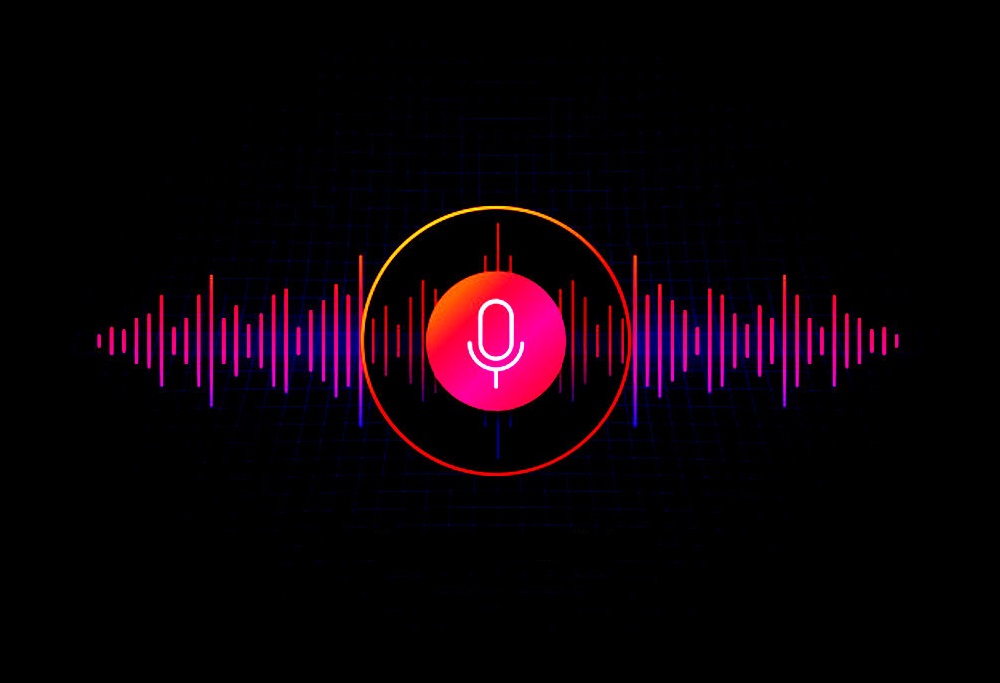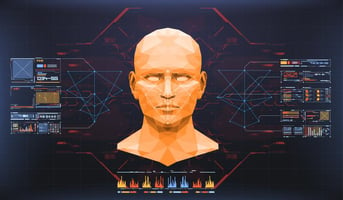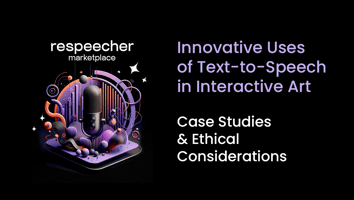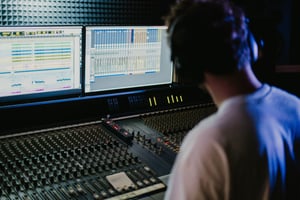What is Text-to-Speech (TTS): Initial Speech Synthesis Explained
Sep 28, 2021 1:08:38 PM

Today, speech synthesis technologies are in demand more than ever. Businesses, film studios, game producers, and video bloggers use AI voice synthesis to speed up and reduce the cost of content production as well as improve the customer experience.
Let's start our immersion in speech technologies by understanding how text-to-speech technology (TTS) works.
What is TTS speech synthesis?
TTS is a computer simulation of human speech from a textual representation using machine learning methods. Typically, speech synthesis is used by developers to create voice robots, such as IVR (Interactive Voice Response).
TTS saves a business time and money as it generates sound automatically, thus saving the company from having to manually record (and rewrite) audio files.
With the efficiency of a text to speech generator, businesses can streamline their audio production processes and focus resources on other critical tasks.
You can have any text read aloud in a voice that is as close to natural as possible, thanks to TTS synthesis. To make TTS synthesized speech sound natural, the painstaking process of honing its timbre, smoothness, placement of accents and pauses, intonation, and other areas is a long and unavoidable burden.
There are two ways developers can go about getting natural-sounding text to speech voices done:
Concatenative - gluing together fragments of recorded audio. This synthesized speech is of high quality but requires a lot of data for machine learning.
Parametric - building a probabilistic model that selects the acoustic properties of a sound signal for a given text. Using this approach, one can synthesize a speech that is virtually indistinguishable from a real human.
What is text-to-speech technology?
To convert text to speech, the ML system must perform the following:
- Convert text to words
Firstly, the ML algorithm must convert text into a readable format. The challenge here is that the text contains not only words but numbers, abbreviations, dates, etc.
These must be translated and written in words. The algorithm then divides the text into distinct phrases, which the system then reads with the appropriate intonation. While doing that, the program follows the punctuation and stable structures in the text. Utilizing a text to speech generator ensures that the converted text is accurately rendered into spoken language with natural intonation and pronunciation.
- Complete phonetic transcription
Each sentence can be pronounced differently depending on the meaning and emotional tone. To understand the right pronunciation, the system uses built-in dictionaries.
If the required word is missing, the algorithm creates the transcription using general academic rules. The algorithm also checks on the recordings of the speakers and determines which parts of the words they accentuate.
The system then calculates how many 25 millisecond fragments are in the compiled transcription. This is known as phoneme processing.
A phoneme is the minimum unit of a language’s sound structure.
The system describes each piece with different parameters: which phoneme it is a part of, the place it occupies in it, which syllable this phoneme belongs to, and so on. After that, the system recreates the appropriate intonation using data from the phrases and sentences. Employing a text to voice converter, the system transforms this linguistic data into natural-sounding speech, ensuring accurate pronunciation and intonation.
- Convert transcription to speech
Finally, the system uses an acoustic model to read the processed text. The ML algorithm establishes the connection between phonemes and sounds, giving them accurate intonations.
The system uses a sound wave generator to create a vocal sound. The frequency characteristics of phrases obtained from the acoustic model are eventually loaded into the sound wave generator.
Industry TTS applications
In general, there are three most common areas to apply TTS voice conversions for your business or content production. They are:
- Voice notifications and reminders. This allows for the delivery of any information to your customers all over the world with a phone call. The good news is that the messages are delivered in the customers' native languages.
- Listening to the written content. You can hear the synthesized voice reading your favorite book, email, or website content. This is very important for people with limited reading and writing abilities, or for those who prefer listening over reading.
- Localization. It might be costly to hire employees who can speak multiple customer languages if you operate internationally. TTS allows for practically instant vocalization from English (or other languages) to any foreign language. This is considering that you use a proper translation service.
With these three in mind, you can imagine the full-scale application that covers almost any industry that you operate in with customers and that may lack personalized language experience. Leveraging a text to voice converter enhances the ability to provide customized and engaging interactions across various sectors.
Speech to speech (STS) voice synthesis helps where TTS falls short
We have extensively covered STS technology in previous blog posts. Learn more on how the deepfake tech that powers STS conversion works and some of the most disrupting applications like AI-powered dubbing or voice cloning in marketing and branding.
In short, speech synthesis powered by AI allows for covering critical use cases where you use speech (not text) as a source to generate speech in another voice.
With speech-to-speech voice cloning technology, you can make yourself sound like anyone you can imagine. Like here, where our pal Grant speaks in Barack Obama’s voice.
For those of you who want to discover more, check our FAQ page to find answers to questions about speech-to-speech voice conversion.
So why choose STS over the TTS tech? Here are just a couple of reasons:
- For obvious reasons, STS allows you to do what is impossible with TTS. Like synthesizing iconic voices of the past or saving time and money on ADR for movie production.
- STS voice cloning allows you to achieve speech of a more colorful emotional palette. The generated voice will be absolutely indistinguishable from the target voice.
- STS technology allows for the scaling of content production for those celebrities who want but can't spend time working simultaneously on several projects.
How do I find out more about speech-to-speech voice synthesis?
Try Respeecher. We have a long history of successful collaborations with Hollywood studios, video game developers, businesses, and even YouTubers for their virtual projects. Our text to speech technology ensures that your virtual projects are brought to life with realistic and engaging voices.
We are always willing to help ambitious projects or businesses get the most out of STS technology. Drop us a line to get a demo customized just for you.

Alex Serdiuk
CEO and Co-founder
Alex founded Respeecher with Dmytro Bielievtsov and Grant Reaber in 2018. Since then the team has been focused on high-fidelity voice cloning. Alex is in charge of Business Development and Strategy. Respeecher technology is already applied in Feature films and TV projects, Video Games, Animation studios, Localization, media agencies, Healthcare, and other areas.



